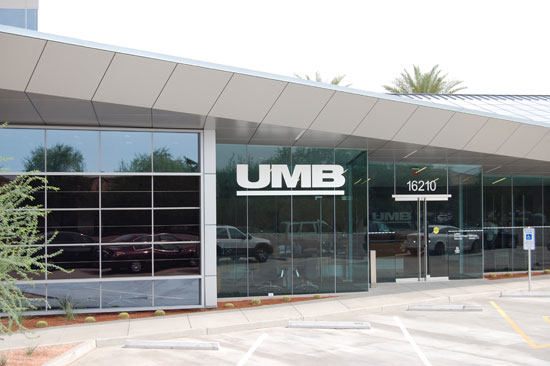Dynamic Solar Control with Electrochromic Glazing
Specifyng and Designing with EC Glazing: Design with Light
There are two key design factors that are unique to electrochromic glazing and can be used in almost unlimited ways to maximize performance and comfort namely, control strategies, and zoning of the glazing. Each of these design factors are discussed in further detail below.
Design Control Strategies
Control strategies determine when the glazing will be in its darkened, clear or intermediate state. They include daylight control, schedule control, and glare control. Each can be addressed individually or they can be combined into an overall strategy.
The specific mechanisms of control can be manually based or automatic by using a daylight sensor, occupancy sensor, or sensors tied into a control system. Depending on the sky conditions (cloudy vs. clear), and sun position, the control system using photo sensor inputs can control tint level to achieve the optimum foot-candle level. With overcast skies, the glass may be cleared to admit enough daylight to achieve optimum illumination within the space. With clear skies, the control system can darken or partially tint the IGUs to limit daylight to obtain the same foot-candle target, while concurrently reducing solar gain. By using multiple sensors in multiple locations, the tint level can be linked directly to the amount of daylight or solar gain desired in any particular space. The control system calculates the angle of the sun based on the time of year (or day) and photo sensor inputs allow for the system to optimize the daylight and amount of solar energy desired in the space. Daylighting controls based on seasonal variation can block solar gain in summer to reduce air conditioning loads, or allow more solar gain in winter to reduce heating needs.
Glare control strategies will play directly into the overall tinting control strategy. Tinting the glass fully (to 2 percent VLT or less) will achieve occupant comfort in direct sunlight or intense reflected light. It is important to note that all individual window panes do not need to be reduced to that level. Rather, the user can also control the glazing through zone control strategies which allow groups or “zones” of windows to be tinted while others can be clear. This is possible because windows and skylights with electrochromic glazing are highly programmable down to each individual pane of glass.
 |
Zones can be established in different bands of window panes to provide the appropriate degree of glare and solar control with EC glazing. Photos courtesy of SAGE Electrochromics, Inc. |
For example, since the sun's glare is directional, EC glazing can be programmed to “track” the sun as it moves around the building. With more zones come a greater number of opportunities to optimize and balance glare, daylighting and energy issues. Alternatively, individual rooms or spaces can be zoned to allow horizontal rows of glazing to respond together such that an upper or lower row(s) can be tinted to block glare where needed while other rows can be left clear.
Specifying EC Glazing
When specifying electrochromic glazing in building projects, there are several things to take into consideration. The process is very analogous to specifying other types of insulated glazing and will be part of the appropriate glazing specification for a project. When it comes to the specification addressing EC control systems, that portion is analogous to specifying control systems for automated blinds. In essence, the specifications for an EC glazing system and associated controls are all very similar in concept and process to other conventional systems.

Electrochromic glazing is available in a range of colors that can coordinate with glazing elsewhere on the building. Photos courtesy of SAGE Electrochromics, Inc. |











